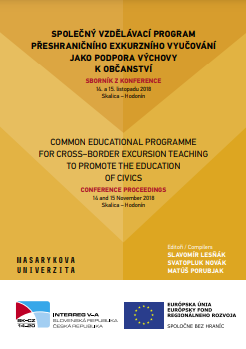Socioekonomická komparace příhraničních regionů Jihomoravského a Trnavského kraje
Socio-Economic Comparison of the Border Regions of the South Moravian and Trnava Regions
Author(s): Jozef Mečiar, Svatopluk Novák
Subject(s): Regional Geography, Socio-Economic Research
Published by: Masarykova univerzita nakladatelství
Keywords: South Moravian region; Trnava region; comparison; cross-border cooperation;
Summary/Abstract: The paper compares the cultural and natural features of the following border regions: South Moravian Region (Czech Republic) and Trnava Region (Slovak Republic). Both regions have a similar demographic and settlement character, which is further strengthened by the ethnic and cultural affinity of the majority of inhabitants of the two compared areas. Although the natural conditions do not hinder cross-border cooperation, they do not really encourage it. There is a certain difference in the position of both regions within their countries, as the South Moravian Region is a larger but only a marginal region, while the Trnava region is a smaller but metropolitan area as the factual background of the state capital. From this point of view, the amenities and economic and political importance of the Trnava region significantly exceed the size of its territory and the number of its inhabitants, while those of the South Moravian region are adequate to its size and population. The complementary type of cooperation (“complementation of the different”) has less chance – either the sources and attractors are the same in the regions, or they are easier to reach in the neighbouring regions of the home states, or they can be achieved in a greater amount and quality in other neighbouring countries. The chances for the coordination type of cooperation (“coordination of the same”), are higher even though the territorial neighbourhood of both regions is rather narrow. This opportunity is used by the project “Common Educational Programme of Cross-Border Excursion Teaching” (NFP304011C840) funded by the European Regional Development Fund under the operational programme Interreg V-A Slovak Republic – Czech Republic 2014–2020.
- Page Range: 10-23
- Page Count: 14
- Publication Year: 2019
- Language: Czech
- Content File-PDF

